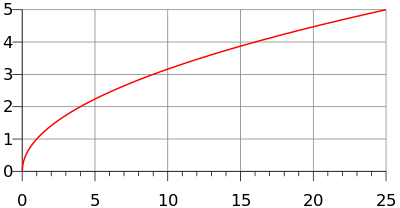Domain of a function
In mathematics, the domain or set of departure of a function is the set into which all of the input of the function is constrained to fall.[1] It is the set X in the notation f: X → Y. Since a function is defined on its entire domain, its domain coincides with its domain of definition.[2] However this coincidence is no longer true for a partial function since the domain of definition of a partial function can be a proper subset of the domain.


A domain is part of a function f if f is defined as a triple (X, Y, G) where X is called the domain of f, Y its codomain, and G its graph.[3]
A domain is not part of a function f if f is defined as just a graph.[4][5] For example in set theory it is desirable to permit the domain of a function to be a proper class X, in which case there is formally no such thing as a triple (X, Y, G). With such a definition functions do not have a domain, although some authors still use it informally after introducing a function in the form f: X → Y.[6]
For instance, the domain of cosine is the set of all real numbers, while the domain of the square root consists only of numbers greater than or equal to 0 (ignoring complex numbers in both cases).
If the domain of a function is a subset of the real numbers and the function is represented in a Cartesian coordinate system, then the domain is represented on the x-axis.
Examples
A well-defined function must map every element of its domain to an element of its codomain. For example, the function defined by
has no value for . Thus, the set of all real numbers, , cannot be its domain. In cases like this, the function is either defined on or the "gap is plugged" by explicitly defining . If one extends the definition of to the piecewise function
then f is defined for all real numbers, and its domain is .
Any function can be restricted to a subset of its domain. The restriction of to , where , is written .
Natural domain
The natural domain of a function is the maximum set of values for which the function is defined, typically within the reals but sometimes among the integers or complex numbers. For instance the natural domain of square root is the non-negative reals when considered as a real number function. When considering a natural domain, the set of possible values of the function is typically called its range.[7]
Category theory
Category theory deals with morphisms instead of functions. Morphisms are arrows from one object to another. The domain of any morphism is the object from which an arrow starts. In this context, many set theoretic ideas about domains must be abandoned or at least formulated more abstractly. For example, the notion of restricting a morphism to a subset of its domain must be modified. See subobject for more.
Other uses
The word "domain" is used with other related meanings in some areas of mathematics. In real and complex analysis, a domain is an open connected subset of a real or complex vector space. In the study of partial differential equations, a domain is the open connected subset of the Euclidean space where a problem is posed, that is, where the unknown function(s) are defined.
More common examples
As a partial function from the real numbers to the real numbers, the function has domain . However, if one defines the square root of a negative number x as the complex number z with positive imaginary part such that z2 = x, the function has as its domain the entire real line (but now with a larger codomain). The domain of the trigonometric function is the set of all (real or complex) numbers not of the form .
See also
Notes
- Codd, Edgar Frank (June 1970). "A Relational Model of Data for Large Shared Data Banks" (PDF). Communications of the ACM. 13 (6): 377–387. doi:10.1145/362384.362685. Retrieved 2020-04-29.
- Paley, Hiram; Weichsel, Paul M. (1966). A First Course in Abstract Algebra. New York: Holt, Rinehart and Winston. p. 16.
- Bourbaki 1970, p. 76
- Bourbaki 1970, p. 77
- Forster 2003, pp. 10–11
- Eccles 1997, p. 91 (quote 1, quote 2); Mac Lane 1998, p. 8; Mac Lane, in Scott & Jech 1967, p. 232; Sharma 2004, p. 91; Stewart & Tall 1977, p. 89
- Rosenbaum, Robert A.; Johnson, G. Philip (1984). Calculus: basic concepts and applications. Cambridge University Press. p. 60. ISBN 0-521-25012-9.
References
- Bourbaki, Nicolas (1970). Théorie des ensembles. Éléments de mathématique. Springer. ISBN 9783540340348.